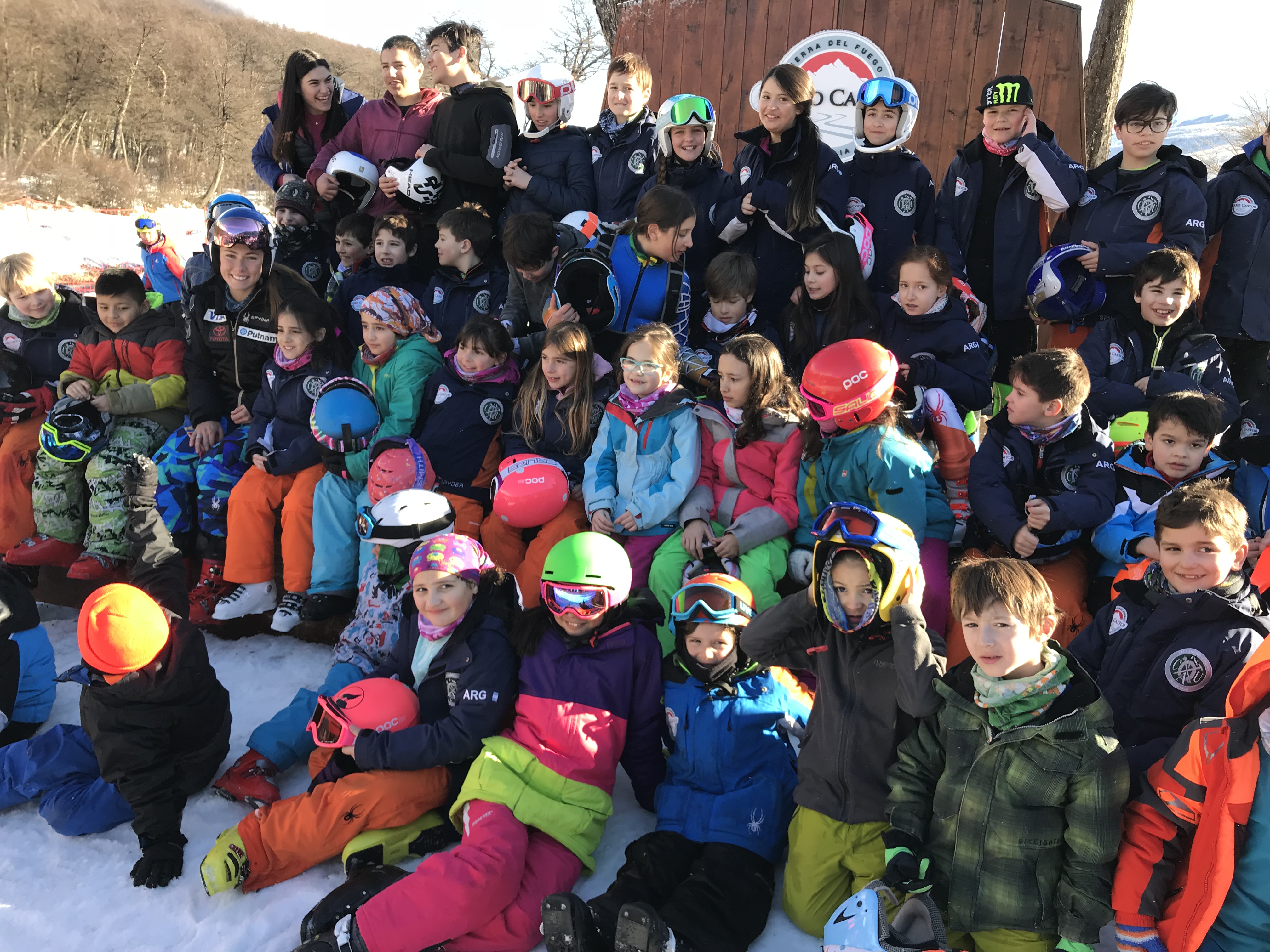Shiffrin Back on Snow in South America

As the dog days of August pass, and the mornings and evenings grow crisper in the mountains, it’s hard not to think about winter. As they say in Game of Thrones, after all, winter is coming. It is indeed.
With athletes traveling to the southern hemisphere chasing snow, alpine ski racing is on our minds. With thoughts of alpine skiing, one can’t escape the vision of Mikaela Shiffrin (Avon, Colo.) dancing down the mountain in her signature style, dominating in tech disciplines and successfully transitioning into speed disciplines - now a World Cup victor in downhill as well.
The back-to-back overall World Cup champion has enjoyed a full summer of activity, including travels to France to see her boyfriend, Mathieu Faivre – a giant slalom specialist on the French National Team – sponsor obligations, an appearance at Cannes Lions Festival alongside Team USA teammate and bronze medalist/new bestie Adam Rippon, and multiple other awards shows. However, her priority number one in preparing for the upcoming season has been hours upon hours of grueling workouts in the gym.
All of those hours in the gym translate to success on the mountain in the winter, and with the World Championships in Are, Sweden this February, Shiffrin has her sights set on gold. And that would be a historic gold for Shiffrin in slalom, as it would be her fourth straight World Championship gold if she secures the victory. Shiffrin has said many times that her goal is to ski her best - it's not about the medals or the records - but she also is keenly aware that if she does ski her best, she'll come out on top.
During summer prep period camps, athletes get vital time on snow dialing in equipment and technique, and August camps are early indicators of whether or not the summer strength and conditioning block has paid off. During a recent visit to Red Bull facilities in Los Angeles, Shiffrin looked stronger than ever. That’s good, too, considering Shiffrin is one of the few five-event skiers remaining on the White Circus. With a stacked schedule that requires care and attention to avoid burn-out, and maintain focus on her core disciplines of slalom and giant slalom, it’s no easy feat, but she’s ready for the 2018-19 World Cup season. Bring it on!
Shiffrin started her prep period this year in a new location for the U.S. Ski Team – Cerro Castor in Ushuaia, Argentina. Typically, Shiffrin has traveled to New Zealand for her August on-snow camp, but this year she wanted to change things up. As a result of crossing multiple time zones, the New Zealand camp typically ends up being three weeks in order to justify the travel. That means jet lag and recovery. Add to that the sometimes-unpredictable weather and Shiffrin knew Ushuaia would be worth the try. In a phone call the other day, she mentioned that she felt great about the camp, was stoked on the terrain and referred to it as “a hidden gem.”
We caught up with U.S. Ski & Snowboard Head Alpine Coach Mike Day as he was still on the ground in Ushuaia to talk shop following the camp. Here’s what he had to say...
U.S. Ski & Snowboard: Why Ushuaia? I know that’s a new venue for us.
Mike Day: Ushuaia seemed like a good option for us. Lots of national teams come here and use it, and have spoken positively about it. The other benefit for coming down here versus New Zealand, for us anyway, was that we could schedule a slightly shorter camp than New Zealand typically requires (to justify the travel down to New Zealand). Less travel meant a bit shorter of a camp – though not any fewer days on snow. Having a little bit shorter of a camp was nice for us to be able to really focus in on three quality training blocks and technical training. We pushed quite a lot of volume – which is something Mikaela likes to do – and the infrastructure here in Ushuaia allowed for that and ended up being really positive.
U.S. Ski & Snowboard: So, tell us about the focus of the camp…what did the training blocks look like and what were you working on?
Mike Day: We ended up doing two training blocks, because we had some weather that we pushed up against, and just kept skiing. So, we still got our nine days in, but we did it in a three-day block and a six-day block, which is not necessarily ideal, but we ended up with warm overnight temps and some heavy rain, so the plan worked out well. Ultimately, we got it in a bit of a different fashion than we initially planned, which is normal in this sport.
U.S. Ski & Snowboard: What was the terrain like, and how did that benefit your training in this vital first prep period?
Mike Day: The resort here ended up being a really nice surprise once we got here. There’s a ton of varied terrain, from more flat and moderate slopes to far more demanding World Cup-caliber slopes. It allowed us to do a nice progression, and we had multiple training options. There’s also great infrastructure for the lift surfaces, so we were able to have fast laps on certain runs and slightly slower laps later in the training plan. What is unique about Ushuaia is that we were training in the trees, on tree-lined trails. This time of year, it’s rare to actually have the opportunity to train in an environment that’s a little more World Cup-race like with tree-lined slopes. It was great, and Cerro Castor itself – the management team and all of the employees – did a great job for us, but they have put a great investment into protection as well, so we had really safe slopes as well as having good surfaces all around the resort.
U.S. Ski & Snowboard: Your team connected with the ski community in a really special way down there. We know Mikaela met with the local club kids and you led a coaching clinic. Can you talk a little about that, and what it entailed?
Mike Day: I met with seven or eight of the coaches here from the local club at Cerro Castor and we spent about an hour and a half talking technique and tactics and did a lot of Q&A about what it’s like to work with Mikaela and the other athletes I’ve worked with in the past. It was a lot of fun and a unique group that was interested in all aspects of the sport.
U.S. Ski & Snowboard: What’s next for your team?
Mike Day: We have about 11 days at home, and then we had back down here to Chile. At that point, we’ll be focusing some more on some speed volume to pick up where we left off in the spring, as well as continuing the tech preparation as we head into Soelden, Austria in October.
During my conversation with Day, there was a knock on the door and shortly thereafter Shiffrin entered the room to give the camp doctor, Travis Dekker, a gift. She giggled, said, “Hi, Megan!” in her usual kind, endearing manner, then poked fun at Day’s headset. The U.S. Ski Team has a doctor rotation for camps and World Cup events, and Day informed me that this doc was an all-star doc. Shiffrin expressed her gratitude to the doc with a gift, and then giggled again and said, “Bye Megan!” before she left the room.
The excitement in Shiffrin’s voice was palpable. It was a successful camp and the whole crew is looking forward to getting back on snow in El Colorado, Chile – where they had excellent training last year.
